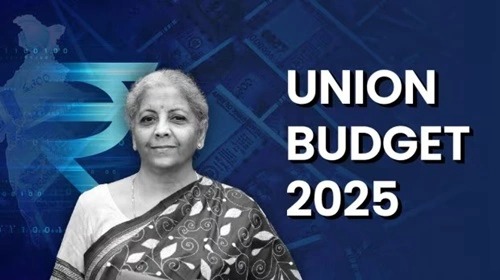
The Union Budget of 2025 presents major tax reform measures alongside economic initiatives through Nirmala Sitharaman while also detailing changes to income tax and implementation of infrastructure investment.
Finance Minister Nirmala Sitharaman unveiled the 2025-2026 Union Budget through her February 1st 2025 address which included comprehensive tax reforms as well as essential programs to promote developmental growth and elevate community well-being.
Income Tax Reforms:
One major feature of the budget provides all individuals who collect less than ₹12 lakh annually with full tax exemption under the new system. An updated tax bracket structure exists for earning levels above the specified threshold to maintain tax system progressiveness. Taxpayers retain the ability to pick between the original tax structure and the new one except for the standard tax framework which stays unaltered.
The budget recommends simplification measures to Tax Deducted at Source (TDS) and Tax Collected at Source (TCS). Senior citizens now receive twice the TDS limit for interest-related transactions at ₹1 lakh while rental TDS thresholds have been set at ₹6 lakh instead of ₹2.4 lakh. Savers will face less tax burden as the National Savings Scheme withdrawals made starting from August 29, 2024 receive complete tax exemption.
Agricultural and Research Initiatives:
The Prime Minister Dhan-Dhaanya Krishi Yojana stands as the central push to fortify the agricultural industry according to the budget. The Prime Minister Dhan-Dhaanya Krishi Yojana seeks to boost access to credit by offering farmers and fishermen and dairy farmers up to ₹5 lakh in short-term loans for their operations.
Six years of direct attention to Tur and Urad growth alongside Masoor cultivation was launched to increase national pulse independence. The establishment of Makhana Board in Bihar will serve as a platform to develop both cultivation and commercial aspects of this water-grown crop.
The allocated budget of ₹20000 crore supports a research-driven project led by the private sector for development and innovation. The Prime Minister Research Fellowship offers ten thousand positions to conduct technological research at IITs and IISc and other premier institutions. Future food security will be secured by establishing a second Gene Bank which will house 10 lakh germplasm lines.
Export Promotion and Industrial Growth:
Open cells destined for use in LED/LCD TVs as well as looms for textiles and capital goods for lithium-ion batteries required for mobile phones and electric vehicles will receive exemption benefits. The proposed budget provides a ten-year duty exemption that promotes the Maintenance, Repair, and Overhaul (MRO) industry by covering shipbuilding equipment and vessels bound for destruction.
The trade facilitation measures allow importers to declare essential information after clearance and after duty payment while avoiding financial penalties as long as they pay interest. The Import General Customs Rules underwent amendments to improve their duration from one year along with options for quarterly reporting instead of monthly submissions.
Strategic Investments:
Through a new initiative the government plans to distribute ₹55.97 billion to aid purchases of oil that will fill strategic petroleum reserves (SPR). Indian Strategic Petroleum Reserve Ltd (ISPRL) maintains strategic petroleum oil reserves that comprise facilities run with companies like Abu Dhabi National Oil Co (ADNOC) and currently operate with a capacity of 5 million tons. Strategic petroleum reserves receive funds for maintenance totaling ₹1.8 billion while an additional ₹3.35 billion supports purchases of land and new cavern construction to protect the nation from worldwide crude supply interruptions.
The government plans to modify the Civil Liability for Nuclear Damage Act of 2010 and the Atomic Energy Act of 1962 in order to pull in foreign and private investments within the nuclear sector. The budget seeks to enable the India-U.S. nuclear agreement while enabling power plant development through U.S. companies that include General Electric and Westinghouse. The government aims to construct 100 GW of nuclear facilities before 2047 yet seeks to start with 20 GW construction within nine years to reach 2032.
The government shows dedication to stimulating economic expansion by implementing transformative tax modifications as well as boosting agricultural development and research initiatives with simultaneous steps to support industrial operations and export growth. These economic policies will enhance India's base while enabling sustainable growth throughout upcoming years.
--Advertisement--

 Share
Share



